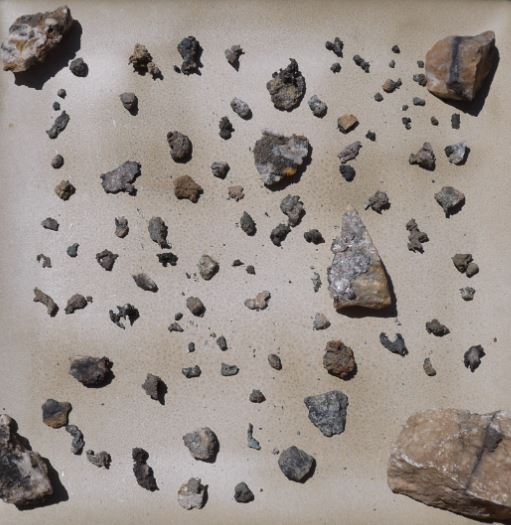Metal detecting is a challenging endeavor. The ability to tolerate disappointment is a requirement, as is persistence. When hunting for minerals, these facts are magnified. The type of metal detector that can find natural nuggets in mineralized soil is in general poor at discriminating iron trash, and at the same time very sensitive to even tiny pieces of metal. Other man-made trash metals often mimic the response of a nugget, especially aluminum, lead, and sometimes brass (especially the dreaded 0.22 short).
Nonetheless, finding nuggets of beautiful, natural metal is possible, and for a wider range of minerals than is often assumed. Depending on the metal detector settings, it is even possible to find Cassiterite (wood tin), lodestone, Chalcopyrite, Chalcosite, silver-enriched Galena, and a whole other host of ore materials, as well as meteorites.
Areas with existing mines are the best places to search, though Gold (and Silver, Copper, etc.) are where you find it, they say. This site has an easy map interface with Google Maps KML locations of old and existing Gold, Silver, and Copper mines. Starting in an area of known metallic mineralization, especially if the mines are listed as “past producers” or “placer”, is your best bet, and if you get lucky, can yield a patch of nuggets like the silver shown in the picture below:

The benefit of old mining areas is that there were people there who stayed a while because there were minerals to mine. The drawback is the same. Hunting old mining areas can be frustrating because of all of the trash left behind – the older the mine, the worse it is up to a point. The trash at older mines tends to disintegrate into 1,000 tiny pieces of chaff, whereas newer mines (e.g., 1980’s gold-resurgence mines) can have more compact trash profiles, but more of it – can you say “bottle cap”? The oldest of mines are actually the best. Iron was a precious material out on the frontiers of New Spain, and so the trash profiles are sometimes nil at the oldest of workings. These super-old mines also benefit from the crude methods employed at the time, which could leave hard-to-mine minerals in place and even enriched slag laying around. To emphasize the point of iron being scarce, consider that there are a number of instances of copper or silver burro shoes having been found; the precious metals were so abundant, and iron so scarce, that the colonial Spanish of the American Southwest used what they had. It’s not like they could just go to Wal-Mart. Who knows, maybe the copper nuggets in the image below narrowly missed becoming a makeshift bridle-piece or burro shoe.

For the metals and metalized minerals that do tarnish, the “halo” effect can also either frustrate or enhance detection. For trash minerals, the halo effect is always problematic, making the junk target ring and read numbers (if you have that sort of machine) in encouraging, but ultimately disappointing, ways. The halo effect is where a chunk of relatively pure material interacts with meteoric (rain) waters and the surrounding soil, itself often mineralized, and produces a zone of chemically-altered soil that a metal detector often interprets in variously-incorrect ways. Once you start digging, you’ll often know if you are dealing with a halo when the target indication changes dramatically. This can be a happy event (nugget! – less likely) or bad (iron crud – more likely).
There’s a lot to know about metal detecting for minerals. Certainly much more than one article can address. Ultimately, experience is the guide, and it seems that every successful detectorist develops his/her own style. This being the case, why not check out the maps of Gold, Silver, and Copper mines that this site has made available, or consult another reference, and get out there and give it a try!



